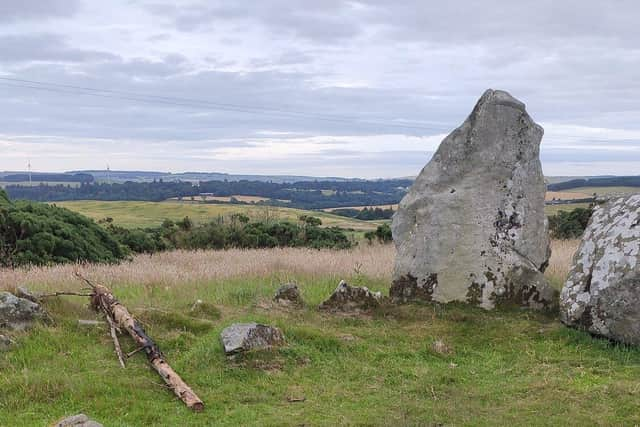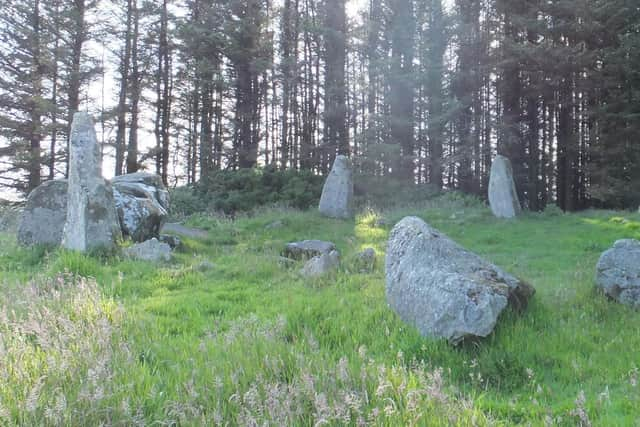Bonfire damages Scottish stone circle as campers drawn to ancient site
The ground at Aikey Brae near Mintlaw, Aberdeenshire, has been burnt, with the site suffering from a spate of anti-social behaviour in recent times.
The site’s remote location on a hillside surrounded by woodland provides cover for night-time gatherings and campers, with the local authority now carrying out a series of improvements to better protect the site.
Advertisement
Hide AdAdvertisement
Hide AdArchaeologists at Aberdeenshire Council were alerted to the most recent damage last week by a member of the public.
Claire Herbert, archaeologist at Aberdeenshire Council, said the damage at the stone circle, a scheduled monument protected in law, was a criminal offence.
A statement from Aberdeenshire Council said: "Aikey Brae is the most intact recumbent stone circle in Buchan. It forms part of Aberdeenshire Council’s Stone Circle Trail and is a popular visitor attraction.
“However, as a result of its secluded location, it also attracts anti-social behaviour and negative use. There have been numerous instances of fire raising at the site, vandalism, fly-tipping, littering and camping, which are all detrimental to the stone circle. These actions also detract from the visitor experience and are in breach of the site’s scheduled status.”


The site was damaged by fire last year and repaired, with repeated reports of fires at Aikey Brae made over the past decade. A sign that outlines the protected status of the stone circle has recently disappeared.
As the local authority works to alleviate anti-social behaviour at Aikey Brae, a plantation of mature spruce that circles the site on three sides has been felled.
The trees, which were densely planted and in poor condition with many toppled by the wind, provided “a ready supply of fuel” for those setting fires at the site, the local authority said.


A smaller woodland has now been planted with mixed native species to open up views from the stone circle, with the inner area of the stone circle to be re-turfed to deter further fires.
Advertisement
Hide AdAdvertisement
Hide AdAikey Brae dates from the Neolithic to Bronze Age period and sits on top of Parkhouse Hill. At the time of its construction, it is likely the stone circle stood alone on the hilltop with 360 degree open views.
The ongoing issues at the stone circle come amid a rise in heritage crime across the country, with the recent lockdown drawing people to often unmanned heritage attractions close to home.
Recent cases include fire pit damage in the grounds of St Bridget’s Kirk at Dalgety Bay and the theft of a 16th-century millstone from Aberdour Castle, also in Fife.
Incidents of anti-social behaviour at Ravenscraig Castle led to walls being scaled and damaged.
At Lincluden Collegiate Church in Dumfries, one teenager was hospitalised after falling from a high wall at the historic site.
At Ardvreck Castle in Assynt, there have been reports of people climbing on the high walls of the ruin, putting both themselves and the structure at risk.
Peter McGrath, head of physical security at Historic Environment Scotland, earlier said there had been a “growing trend” in petty damage, illegal metal detecting, vandalism, graffiti, fire setting and general anti-social behaviour across sites in Scotland, particularly in the past year since lockdown.
Comments
Want to join the conversation? Please or to comment on this article.
